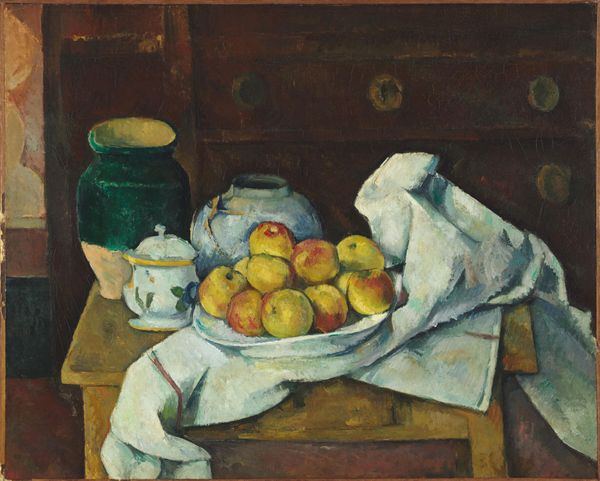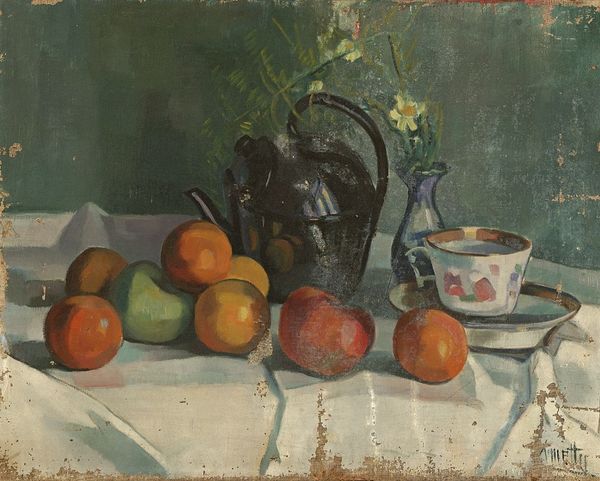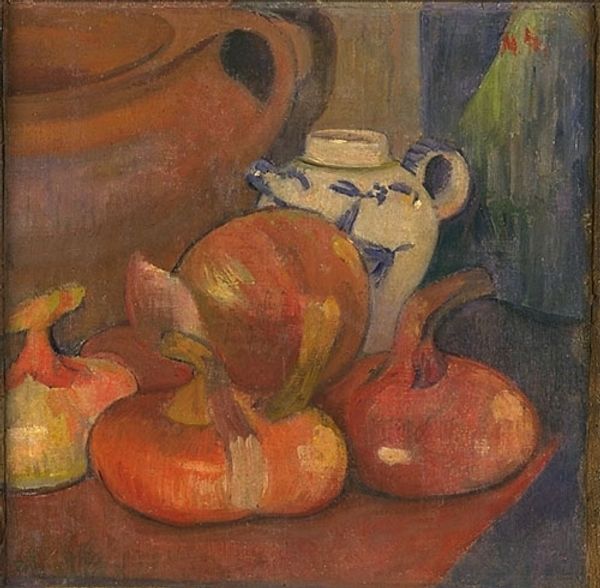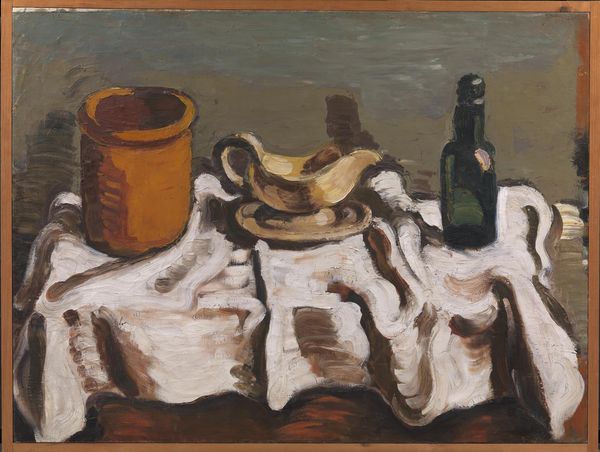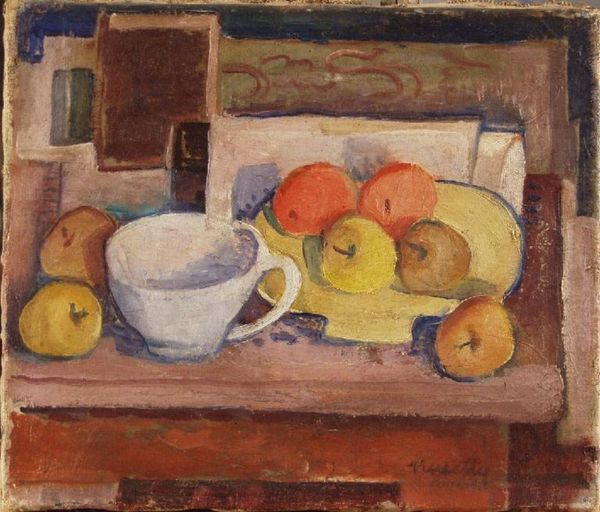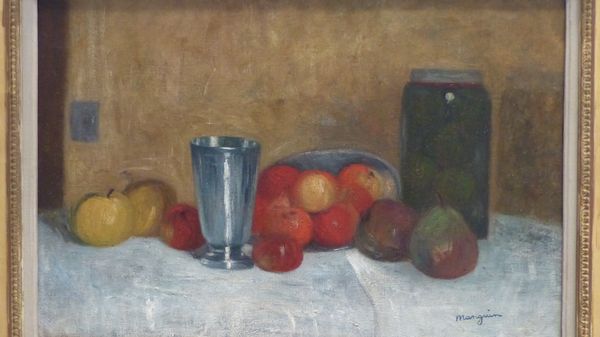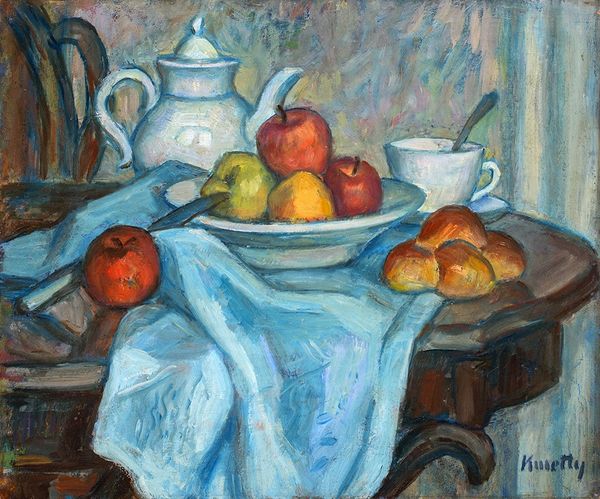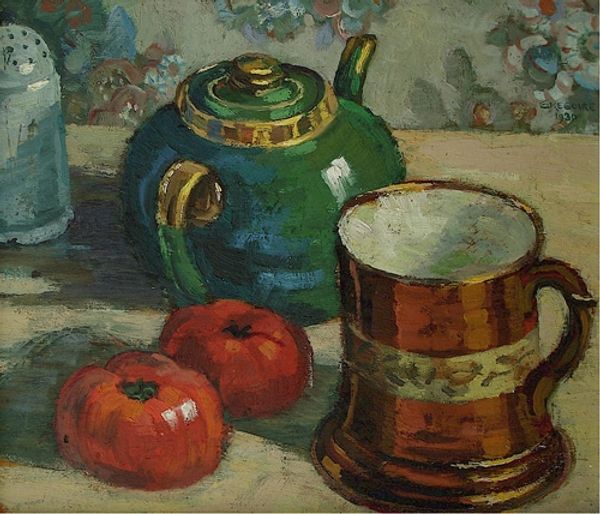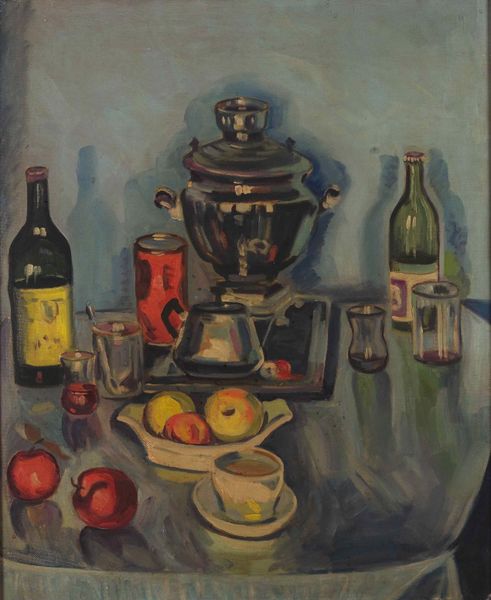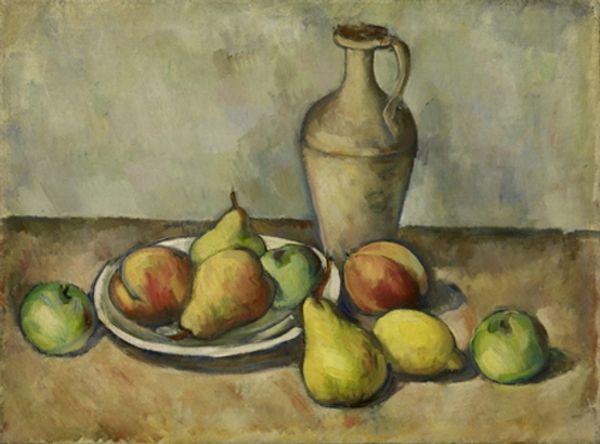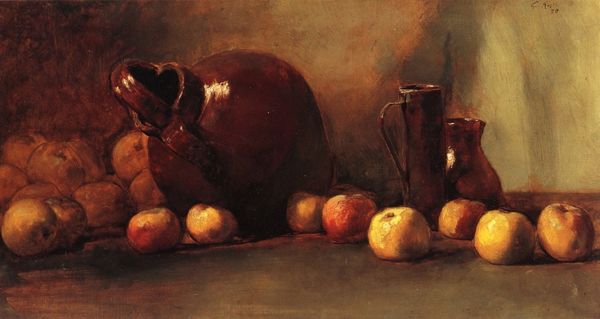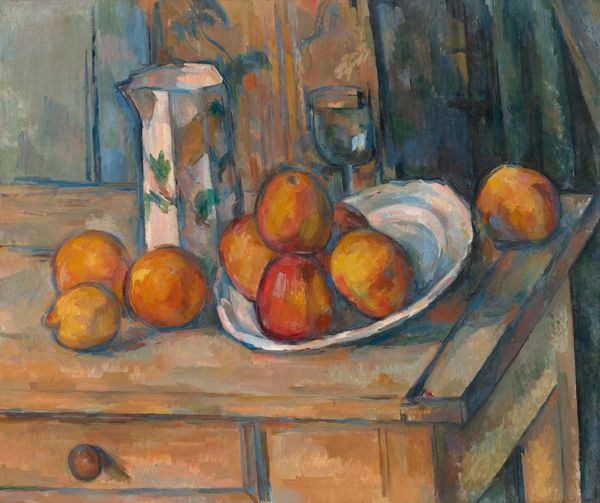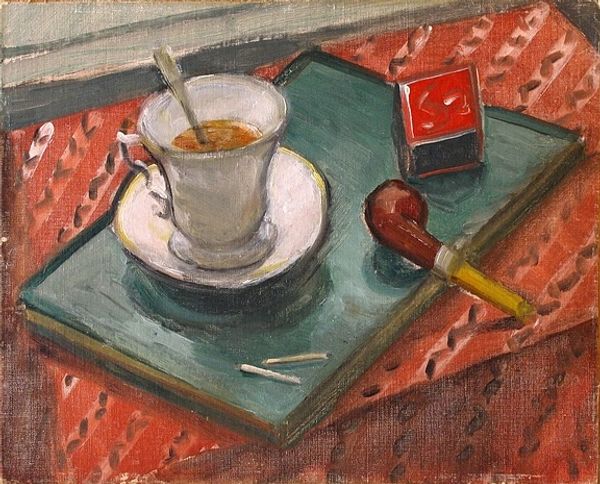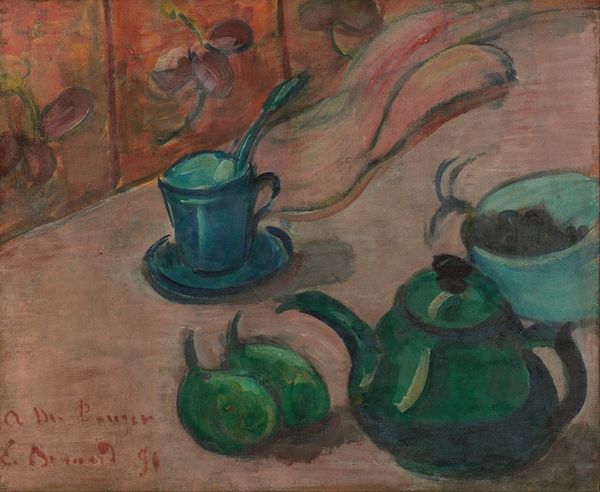
Copyright: Public domain
Editor: Here we have Alfred William Finch's "Still Life" from 1923, an oil painting. I find the muted colors and heavy impasto to create a very grounded, almost somber, feeling. What elements of the social climate or art world might have led Finch to this particular aesthetic choice in the 1920s? Curator: That's a very astute observation! After the devastation of World War I, we see a lot of artists grappling with loss and disillusionment. Finch, like many, might have been turning away from pre-war idealism and toward a more austere, realistic, even melancholic representation of the everyday. Considering that still life, traditionally, carries themes of mortality and the fleeting nature of beauty, do you think the selection of these earthenware objects amplifies such feelings in comparison to more opulent elements usually depicted within baroque painting, for example? Editor: I see your point. Instead of, say, a vibrant bowl of fruit or gleaming silverware, he chooses these very ordinary, almost utilitarian, objects. The dark glass with the deep red drink becomes less luxurious, and almost more morose. Curator: Precisely! Think about how the rise of industrial production was also changing society. Was Finch perhaps hinting at a shift in values, where handmade, everyday objects gain new significance in a world increasingly dominated by mass-produced goods? Maybe the subdued palette is a subtle protest against the encroaching machine age. Editor: That's fascinating. I hadn’t considered it in terms of industrialization. So, the painting functions almost as a quiet commentary on the societal shifts happening at the time? Curator: Exactly! It shows us that art isn't created in a vacuum. Even a simple still life can be deeply engaged with the social and political realities of its time. Editor: That completely shifts my perception of it. Thanks so much. Now, it feels much less still, and much more… alive with context! Curator: My pleasure! Hopefully this has emphasized that art isn't always a reflection of the immediate aesthetic world, and can become much more valuable when looked at in context.
Comments
No comments
Be the first to comment and join the conversation on the ultimate creative platform.
